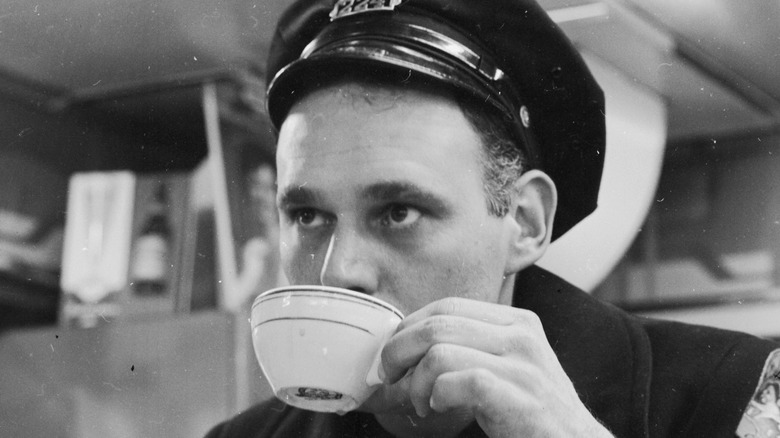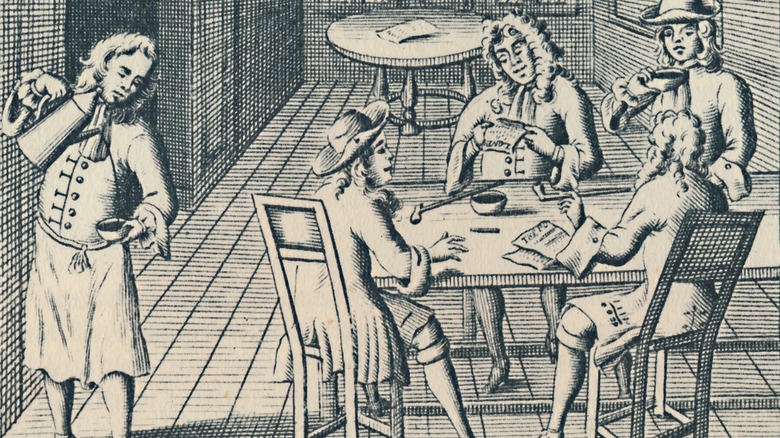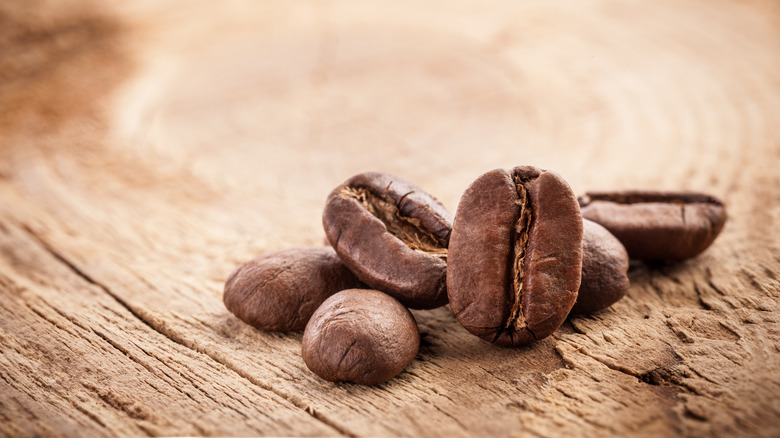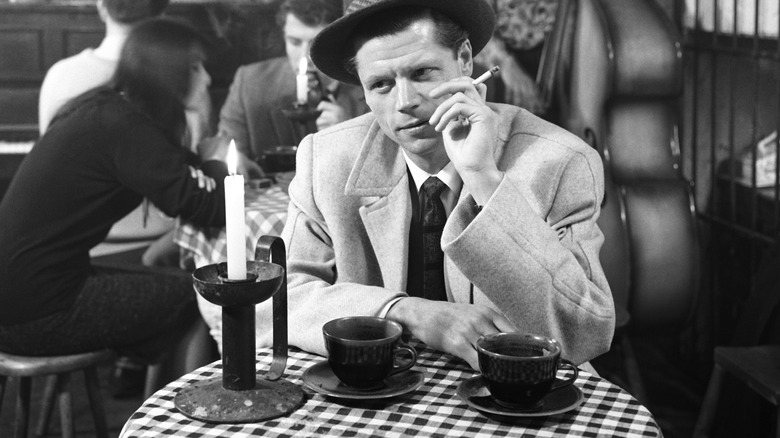Is This Why We Call Coffee A Cup Of Joe?
The British have their cuppa, the Americans have their joe. Never heard of it? You may or may not get a funny look for it today, but at least until recently, you could walk into a diner anywhere in the United States, look your server dead in the eye, and ask for a "cup of joe." You'd be rewarded with a tall, steaming cup of coffee, percolated or drip-brewed in the American style. Milk, cream, or tobacco are optional.
It's a strange name, if you think about it. Coffee's other nicknames are easy to grasp: "morning mud" for its appearance, "jet fuel" for its effect, "java" for the Indonesian island renowned for its coffee plantations. (This is excluding the byzantine, oddly Italian nomenclature of "ventis" and "grandes" and "mochas" and "lattes" made famous by a certain coffee bar empire.)
But why joe? Was it somebody's name, originally? And if so, whose? The truth is, joe as a reference to coffee probably doesn't derive from anyone's name, although The Roasterie suggests that it may have referred to Josephus Daniels, Woodrow Wilson's secretary of the Navy. Daniels banned alcohol on naval vessels shortly in 1914; the story would have crabby sailors dub the next best substitute after the man who took their beloved rum. Realistic? Consider it a sea yarn: there's no evidence for this.
Not that 'Joe'
Americans have certainly been drinking coffee long enough for this to be at least somewhat plausible. According to PBS, the hot, black, invigorating brew we all love and depend on left its homeland along the Red Sea in the 1600s. According to legend, an Indian Muslim named Baba Budan encountered the drink during a pilgrimage to Mecca. He returned to India with a sack of fresh coffee beans. (They had to be fresh: coffee, the drink, is made from dried or roasted beans, which cannot be replanted.) He sold some to a Dutch merchant, and by 1616 Dutch companies were starting coffee plantations in southeast Asia. Production boomed.
By the 1700s, coffeehouses were a pillar of cultural life in European capitals, especially London. Unlike beer or wine, coffee allowed merchants to stay sharp during business negotiations. The first newspapers, like the Spectator and the Tatler, emerged from coffeehouse gossip and banter in the 1750s; according to St. Lawrence University, coffeehouses distributed these early printed sheets to their customers, who read them aloud and berated the journalists, like Joseph Addison, who might be sipping a coffee beside them.
PBS notes that American colonists embraced coffee to protest tea taxes. It quickly became a pillar of the American diet, comforting soldiers during the Civil War and even, yes, sailors on American vessels.
'Jamoke'
A more reasonable explanation is that joe is a shortened form of "jamoke," an old slang term for coffee. Merriam-Webster dates this word to about 1910, and it stuck around for at least a couple decades. It makes an appearance in a W.C. Fields sketch from the 1930s (posted on YouTube).
What in the world does jamoke mean? It's a blend of Java and Mocha, with Mocha humorously misspelled, as Americans seem to enjoy doing at the time: they also turned "all correct" to "oll korrect" and abbreviated it o.k., for instance (per History). Java is still a major coffee producer, as the Espresso Coffee Guide lays out, supplying the world with rich, aromatic arabica coffee beans. Mocha is a port on the Red Sea, in modern Yemen; under the Ottoman Turks, it became the site of a thriving coffee trade, and eventually lending its name to the same Arabica beans that the Dutch would plant in Java (via Britannica). In other words, a cup of jamoke was a blend of Arabian and Indonesian coffee — or, more broadly, a cup of arabica coffee, as opposed to the stronger, coarser robusta bean.
For the common Joe
But did "jamoke" become "joe?" According to one theory, it morphed slowly into "joe," perhaps from people slurring as they ordered a hurried breakfast before work. But that leaves some questions unanswered. For one thing, can you imagine the first person to call jamoke "joe"?
For another thing, joe seems to be much older than jamoke. Merriam-Webster dates the usage of "joe" to the mid-19th century. The dictionary does not differentiate between the various meanings of the word "joe," but there's a chance that people were asking for a cup of joe in the 1850s. That's about 70 years before jamoke became a common drink order. However, the word "joe" can also be used to describe an average, understated man — a man without airs, the salt of the earth: Average Joe, Joe Six-Pack, even Hasbro's G.I. Joe. "A cup of joe" seems to capture that same sense of unpretentious comfort. It may not be a perfect answer, but it's as satisfying as hot coffee on a cold day.



